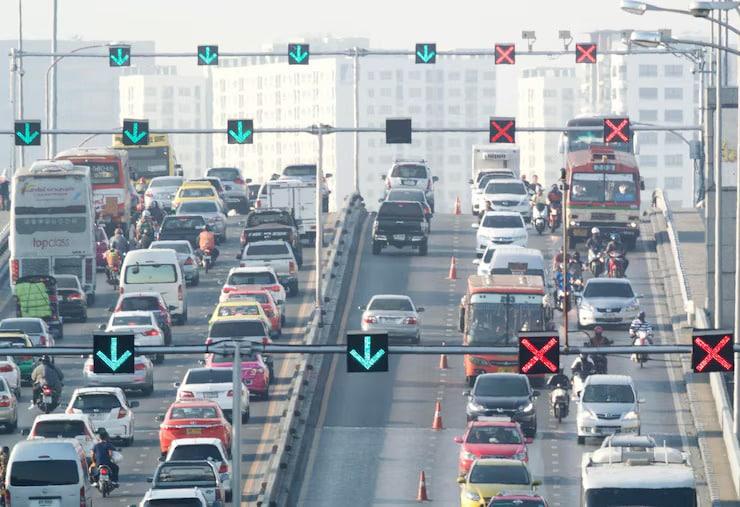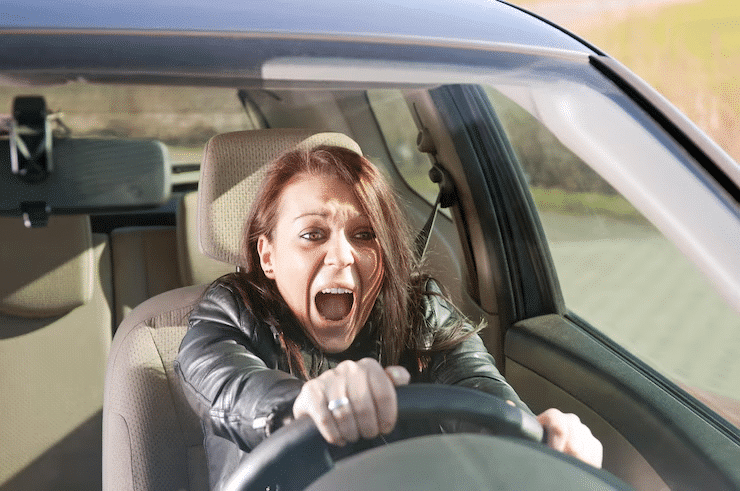
Charleston, South Carolina, is a city renowned for its historic charm, vibrant culture, and scenic waterfronts. As a popular tourist destination and a growing urban center, its roadways are often bustling. Unfortunately, with increased traffic comes an increased risk of accidents and traffic collisions. Understanding the leading causes of these incidents is vital for promoting road safety and for individuals to be prepared if they are involved in an auto accident. At Ted Law Firm, we are committed to informing the community, aiming to prevent future incidents, and providing clear guidance for those impacted by unexpected events on the road.
Distracted Driving: A Pervasive Danger on Charleston’s Historic Roads
One of the most frequently cited and highly preventable causes of traffic collision in Charleston, mirroring trends across the United States, is Distracted Driving. This hazard extends beyond merely using a cell phone behind the wheel; it encompasses any activity that diverts a distracted driver’s attention from the primary, critical task of operating a motor vehicle. The consequences of even a momentary lapse in attention can be severe, leading to dangerous situations on busy downtown streets or scenic coastal routes.
Common manifestations of Distracted Driving include:
- Cell phone use: Texting, talking, checking social media, or navigating. Despite legal restrictions on handheld device use in South Carolina, many drivers still engage in these risky behaviors, significantly increasing the risk of accidents. Even hands-free conversations can divide a driver’s focus, making them one of the numerous distracted drivers.
- Eating and drinking: Taking hands off the wheel or eyes off the road to consume food or beverages. This seemingly innocent act can become a major distraction, particularly in heavy traffic or during sudden stops.
- Grooming: Applying makeup, combing hair, or performing other personal care activities while driving. Such activities pull a driver’s eyes and mental focus away from the road, often for crucial seconds.
- Interacting with passengers: Engaging in intense conversations, attending to children, or managing pets in the motor vehicle. While these interactions are part of daily life, they can reduce a driver’s awareness of changing road conditions.
- Adjusting vehicle controls: Fiddling excessively with the radio, climate control, or GPS system. Modern vehicle infotainment systems, while offering convenience, can be a source of significant Distracted Driving.
A distracted driver looking down at a phone for just a few seconds at typical city speeds can travel a considerable distance without truly observing the road ahead. In that brief period, a lot can go wrong, potentially leading to a Rear-End Collision or a failure to react to unexpected hazards, which could tragically result in fatal accidents. Such incidents are a direct consequence of driver behavior and driver error.
Speeding and Reckless Driving: A Threat to Charleston’s Charm

Exceeding the posted speed limits is another leading cause of traffic collisions in Charleston. Whether on busy thoroughfares like Meeting Street, King Street, or longer stretches like Highway 17, excessive speeds reduce a driver’s reaction times, increase the distance required to stop, and amplify the force of impact in a traffic collision. The faster a motor vehicle travels, the more severe the potential outcome of a crash, leading to more devastating traffic collisions.
- Reduced reaction times: High speeds leave less time for a driver to perceive a hazard, process the information, and react appropriately. This is especially critical in urban environments with unpredictable pedestrian or bicycle traffic patterns.
- Increased stopping distance: The physics of braking dictates that the faster a motor vehicle is moving, the longer it takes to come to a complete stop, even with optimal braking. This can lead to sudden stops and chain reactions in heavy traffic.
- Greater impact force: The kinetic energy involved in a traffic collision increases exponentially with speed, resulting in more severe injuries, greater Property Damage, and a higher likelihood of fatal crashes.
Aggressive driving, which often accompanies speeding, encompasses behaviors like tailgating, rapid lane changes without signaling, and running traffic signals. Such reckless driving behaviors create a dangerous environment for all road users, significantly increasing the overall risk of accidents and undermining road safety. These are clear examples of driver error that can have devastating consequences. In some cases, road rage can also escalate into such dangerous driving patterns.
Impaired Driving: A Grave and Avoidable Threat to Public Safety
Driving under the influence of alcohol or drugs remains a persistent and tragic cause of traffic collisions in Charleston, South Carolina. Impaired driving, whether from alcohol, illicit drugs, or even certain prescription medication or over-the-counter medications, severely compromises a driver’s ability to operate a motor vehicle safely. A Drunk Driver makes a conscious, dangerous choice that endangers innocent lives.
- Alcohol impairment: Even small amounts of alcohol can impair judgment, coordination, and reaction times. As blood alcohol content (BAC) levels rise, these impairments become more pronounced, leading to dangerous levels of impairment. Drunk Driving is a prevalent issue that contributes to many fatal accidents and fatal car accident incidents.
- Drug impairment: Both illicit and prescription drugs can have intoxicating, sedating, or disorienting effects that make driving hazardous. It is crucial for drivers to understand the potential side effects of any medication they take, or the influence of drugs, before getting behind the wheel.
The decision to drive while impaired driving is a reckless one that can lead to catastrophic outcomes, affecting not only the impaired driver but also innocent motorists, passengers, and pedestrians. While law enforcement diligently works to deter impaired driving, it tragically remains a contributing factor in many serious traffic collisions and fatal collisions.
Fatigued Driving: The Insidious Danger of Drowsiness
Often underestimated, Drowsy driving is a significant cause of traffic collisions, particularly on longer journeys, late-night hours, or during early morning commutes. Drowsy driving can have effects similar to alcohol impairment, leading to slowed reaction times, impaired judgment, and even dangerous microsleeps, where a driver briefly falls asleep at the wheel without realizing it.
- Microsleeps: These are brief, involuntary episodes of sleep that can last for a few seconds or longer, during which the driver is completely unresponsive and unaware of their surroundings. Even a few seconds of microsleep at highway speeds can cover a significant distance.
- Reduced alertness: Fatigue diminishes a driver’s ability to pay attention to the road, anticipate road hazards, and react to changing road conditions.
- Impaired decision-making: Drowsiness can lead to poor judgment, increased risk-taking, and a reduced ability to make sound decisions in critical traffic collision situations.
While truck drivers and operators of commercial vehicles are often subject to strict regulations regarding hours of service to combat fatigue, any driver can become dangerously drowsy. Recognizing the signs of fatigue, such as frequent yawning, difficulty focusing, or drifting from lanes, and taking breaks, consuming caffeine, or pulling over to rest, are essential safe driving practices to prevent a traffic crash.
Disregarding Traffic Laws: A Pattern of Negligence

Beyond specific issues like speeding and impaired driving, a general disregard for fundamental traffic laws is a major contributor to numerous traffic collisions caused by driver error. These actions demonstrate a lack of respect for the rules designed to ensure road safety for everyone.
Common violations include:
- Running red lights and stop signs: These actions are a primary cause of T-bone collisions at intersections, which can be particularly devastating. These are often seen at traffic signals.
- Improper lane changes: Changing lanes without signaling, cutting off other drivers, or unsafe merging. A sudden lane change accident can disrupt traffic patterns and lead to Rear-End Collisions.
- Following too closely (tailgating): This significantly reduces a driver’s ability to stop in time if the motor vehicle ahead suddenly brakes, often resulting in a Rear-End Collision.
- Failure to yield right-of-way: Not giving way to other motor vehicles or pedestrians when required, leading to traffic collisions at intersections, crosswalks, or when turning.
- Reckless behavior like street racing or Aggressive driving maneuvers: While not always the leading cause in sheer numbers, these can lead to extremely severe injuries and fatal crashes.
These consistent violations by reckless drivers indicate a pattern of negligence that puts everyone on the road at risk. Inexperienced drivers may also contribute to these errors due to a lack of situational awareness or understanding of traffic dynamics.
Environmental and External Factors: When Conditions Deteriorate
While human error is a dominant factor, external conditions can also contribute to traffic collisions. Drivers must adjust their behavior to account for these circumstances.
- Poor weather conditions: Charleston, South Carolina, experiences various weather conditions that can make driving challenging.
- Heavy rain: Reduces visibility, creates slippery road conditions, and increases the risk of hydroplaning.
- Fog: Dramatically limits visibility, making it difficult to see other motor vehicles, pedestrians, or road hazards.
- Ice and snow: Although less frequent in South Carolina, unexpected icy road conditions can make roads extremely treacherous, leading to loss of control and multiple traffic collisions. These conditions heighten the overall risk of collisions.
- Poor road conditions: While less common than driver error, sometimes the road itself plays a role.
- Road defects: Potholes, uneven surfaces, or damaged pavement can cause drivers to lose control, especially at higher speeds or for motorcycles.
- Lack of proper signage or lighting: Can confuse drivers, particularly at night or in unfamiliar areas, contributing to a traffic accident.
- Road construction zones: These areas often involve narrowed lanes, shifted traffic patterns, temporary hazards, and decreased speed limits, all of which require heightened driver awareness and can lead to traffic congestion.
While drivers are expected to navigate these hazardous conditions cautiously, a traffic collision caused by a significant road defect or mechanical issues (such as a tire blowout from a pothole or a defective vehicle) may involve other considerations.
Ted Law Firm: Your Advocate After a Collision
Understanding the causes of traffic collisions is the first step towards promoting safety and navigating the challenging aftermath when an incident occurs. The consequences of a traffic collision can be life-altering, involving severe injuries, extensive Property Damage, mounting medical bills, lost income, and significant emotional distress. If you or a loved one has been involved in a traffic accident or auto accidents in Charleston, South Carolina, Ted Law Firm is here to provide dedicated guidance and support.
We focus on helping individuals who have been impacted by the negligence of others on the road. We recognize the complexities involved in traffic collision cases and are committed to advocating for your rights. From investigating the circumstances at the accident scene, gathering crucial accident reports and police records, to dealing with a difficult insurance company, and pursuing fair compensation for damages such as medical bills and lost wages, Ted Law Firm is devoted to guiding you through every step of the legal process. Our goal is to help you understand your legal options and work diligently to ensure you receive the fair compensation you deserve for your losses. If you’re seeking an accident lawyer or an accident attorney who genuinely cares about your outcome, consider reaching out to us for your insurance claim.
If you or a loved one has been impacted by a traffic collision in Charleston, securing reliable legal guidance is paramount. Contact Ted Law Firm today for a comprehensive discussion about your situation. We proudly serve injury victims in Aiken, Anderson, Myrtle Beach, North Augusta, Orangeburg, Charleston, Columbia, Greenville and Summerville. If you’ve been injured due to someone else’s reckless or criminal behavior, our experienced attorneys are here to help you seek justice and recover the compensation you deserve. Let Ted Law Firm help you file a successful claim for emotional damages. Contact Ted Law Firm today for a free consultation. We’re committed to supporting families in their time of need.
